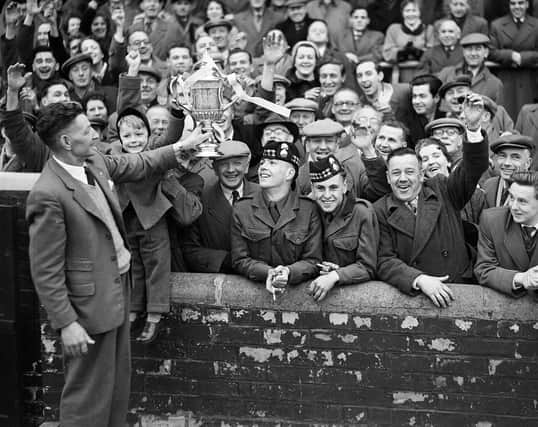When Heart of Midlothian Football Club was formed in 1874, the club played at a variety of places across the capital – including the Meadows, Powburn and Powderhall – before moving to the Gorgie area in 1881.
The first pitch, known as ‘Old Tynecastle’, was where Wardlaw Street is today and the club moved to their current location on the other side of Gorgie Road in 1886.
A friendly against Bolton Wanderers was the inaugural game played there on April 10, 1886, while a 5-0 loss to Celtic was the ground’s first Scottish Football League fixture on August 23, 1890.
In the early 20th century major changes were made to the ground, with a small stand and pavilion built in 1903 and banks of terracing added in 1906, increasing the capacity to 61,784.
Tynecastle continued to expand in the following decades – a pitch-length grandstand was created in 1914, and the terraces were extended again after the club bought the ground from the Edinburgh Corporation in 1926, with floodlights added in 1957.
Ground safety regulations came into effect in the 1970s, forcing the capacity to be slashed to 29,000, with the installation of benches on the terraces.
Then, when the Taylor Report required all sports grounds to become all-seated in 1994, the entire western and northern sides of the ground were demolished, with the construction of the Wheatfield Stand, followed by the addition of the Roseburn Stand in 1995.
The current stadium is split into four sections – the Gorgie Stand, Wheatfield Stand and Roseburn Stand, alongside the Main Stand that was rebuilt in 2017.
The stadium now has a seating capacity of 20,099, making it the sixth-largest football stadium in Scotland.
Here are 20 pictures to take you back to Tynecastle in the 1950s and 1960s.
A friendly against Bolton Wanderers was the inaugural game played there on April 10, 1886, while a 5-0 loss to Celtic was the ground’s first Scottish Football League fixture on August 23, 1890.

5. Training day
Trainer Johnny Harvey speaks to the Hearts football team before a training session at Tynecastle in July 1965. Photo: Unknown

6. Working out
Hearts footballer Don Kerrigan is pictured in the Tynecastle treatment room in 1965. Photo: Unknown

7. Running laps
A group of referees join Hearts players for their pre-season training, with the Tynecastle terracing in the background, in August 1965. Photo: Unknown

8. Local hero
Willie Bauld is cheered by fans at his Hearts v Sheffield testimonial game at Tynecastle during his last season before retiring in 1962. Photo: Unknown

